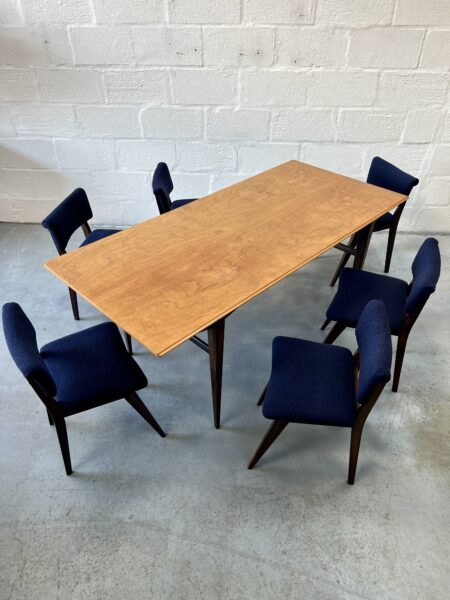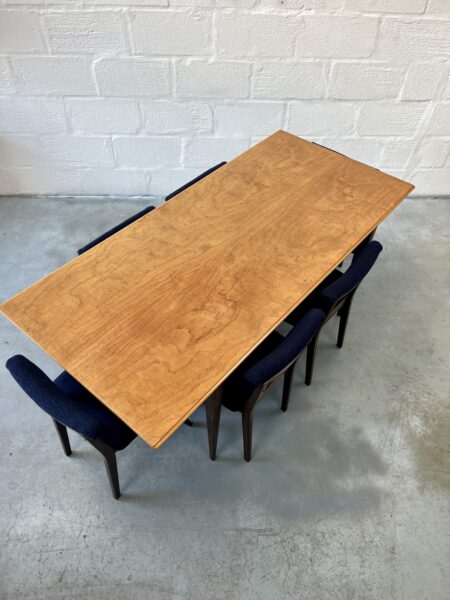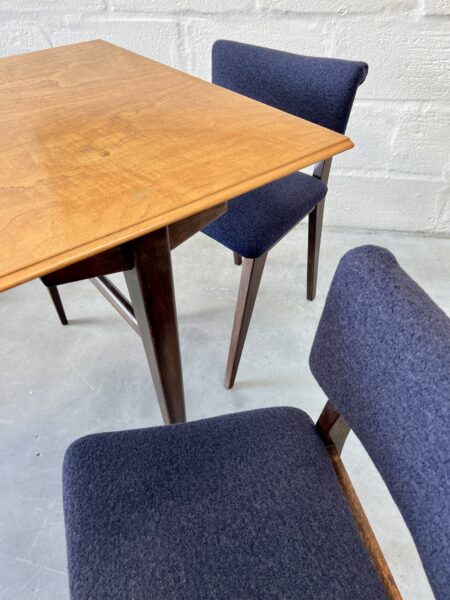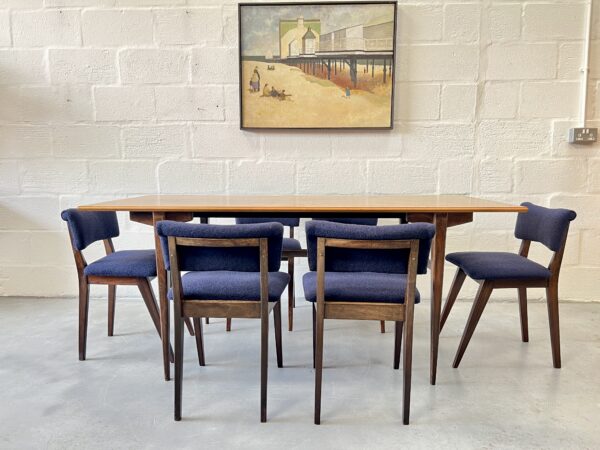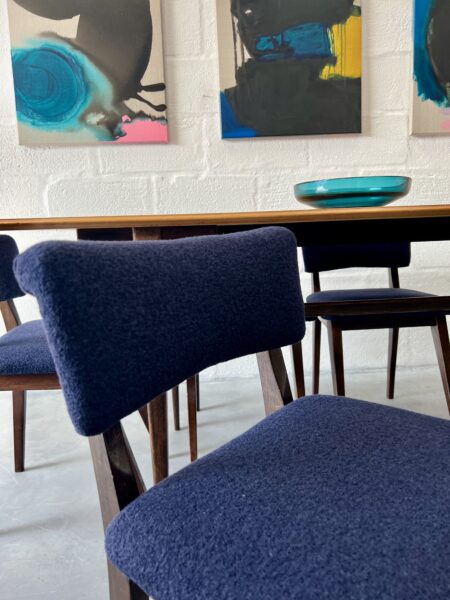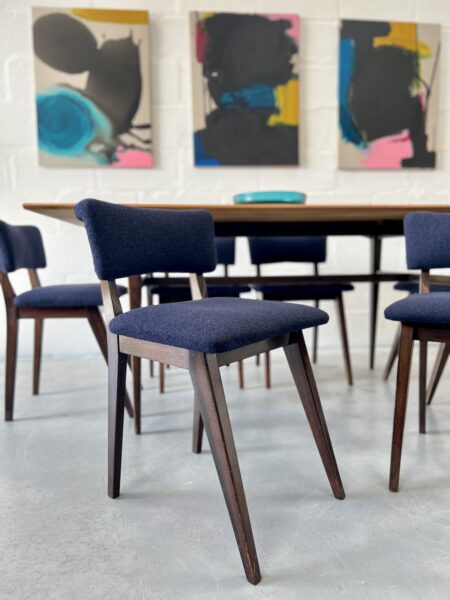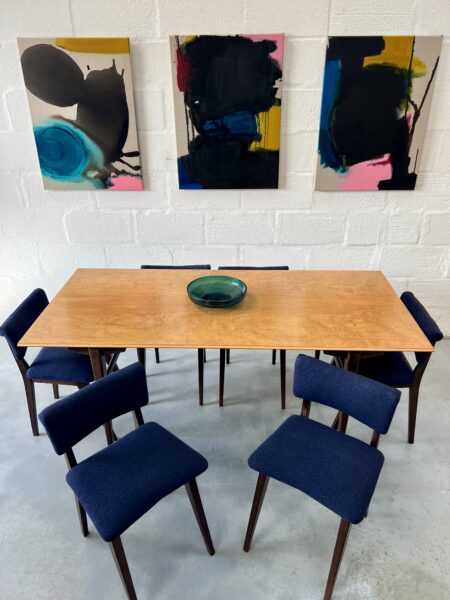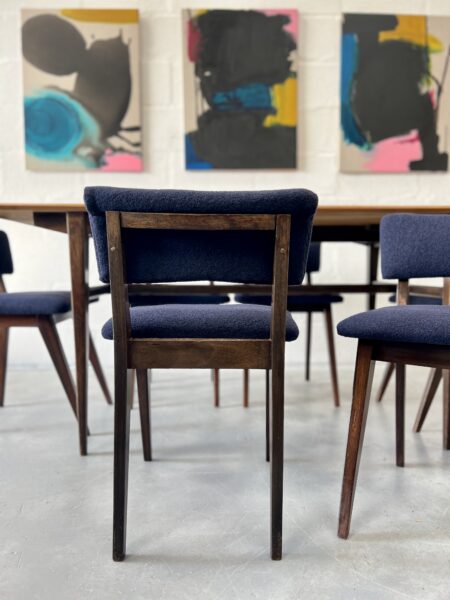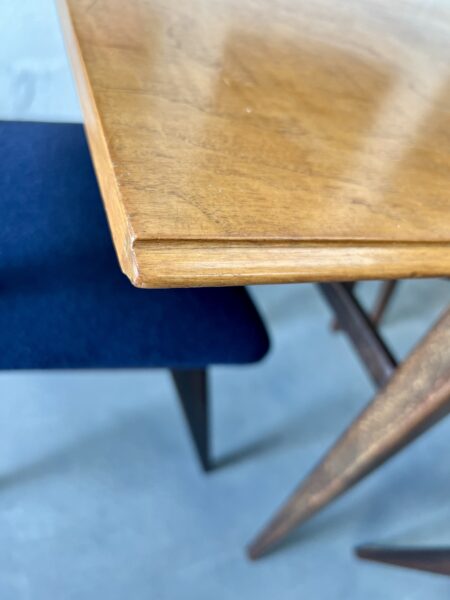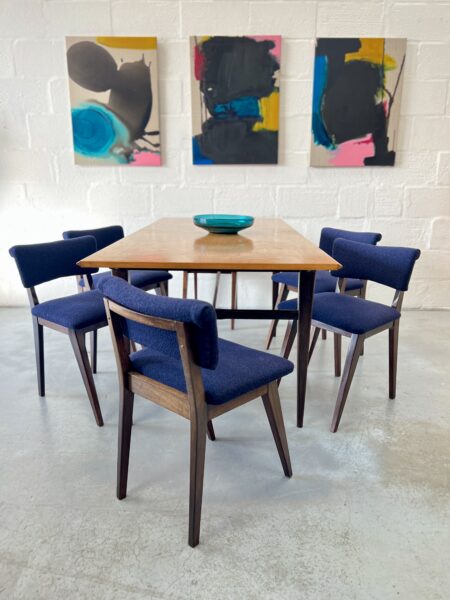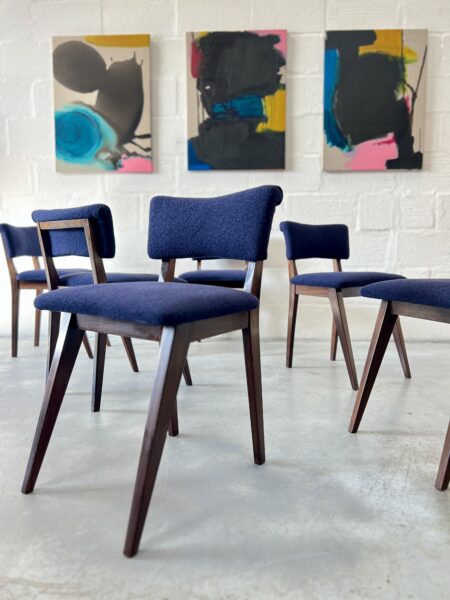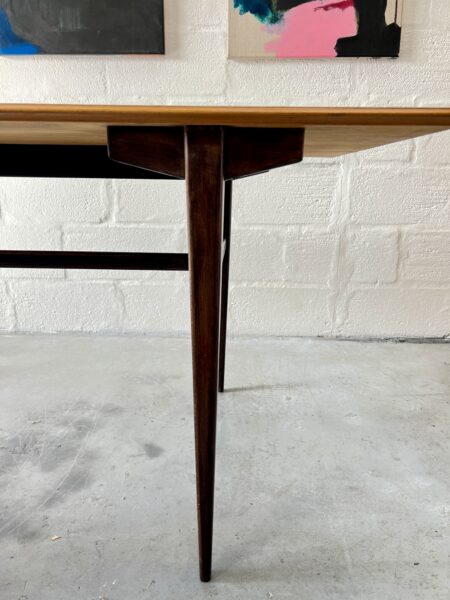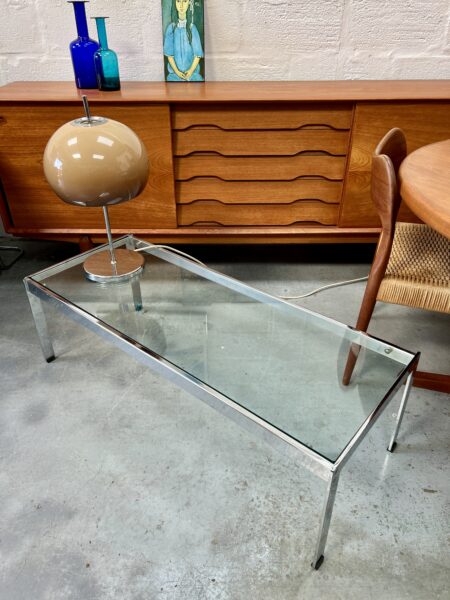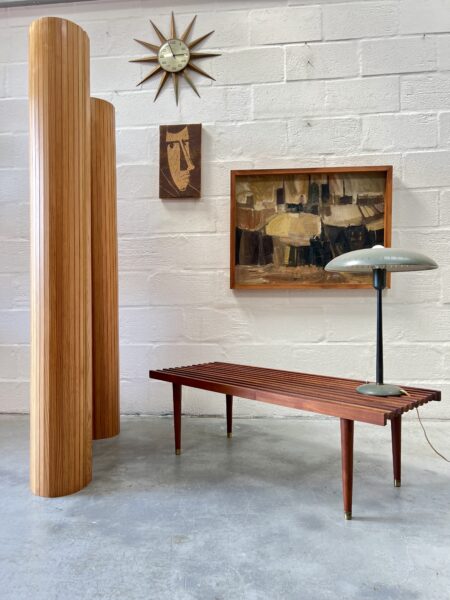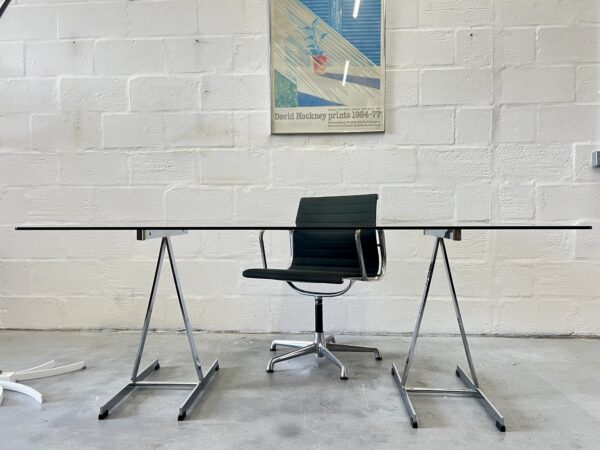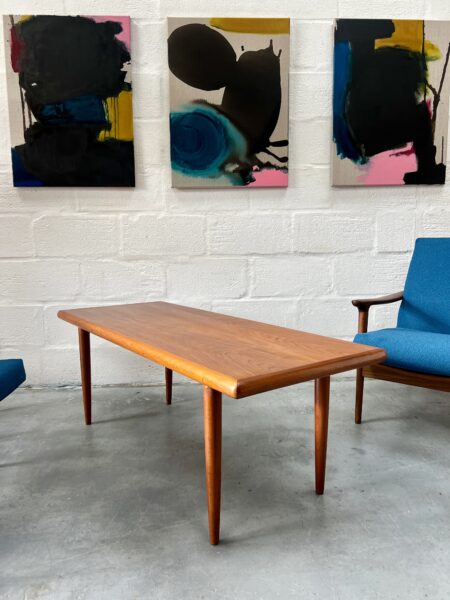This antique dining set by J. Christopher Heal for Heals is a stunning addition to any dining room. The set includes a beautiful teak & walnut table and six matching chairs, all in excellent condition and with original wool upholstery. The CC41 style is a classic mid-20th century design, perfect for vintage enthusiasts or anyone looking for a unique and stylish dining experience.
Despite being manufactured in 1949, this dining set is still in great shape and is sure to impress any guest. The set includes all the necessary items for a comfortable dining experience, with seating for six people. This piece is truly a one-of-a-kind antique that will add character and charm to any home.
J. Christopher Heal for Heals ‘D5049’ Dining suite. Stamped with the CC41 Utility Stamp.
As the regulations on furniture manufacture under the war-time Utility Furniture Scheme were relaxed in the late 1940s, furniture makers were allowed to use a wider range of woods, such as the walnut veneer on this 2 plank table top. Christopher Heal designed this dining suite as part of a series from 1949–50. The first batch was made by William Birch & Co. of High Wycombe, but the licence was later taken over by Kandya Ltd of London.
In excellent vintage condition. Six dining chairs newly upholstered in Yorkshire Mill Navy Blue Wool & Cashmere boucle fabric. The chairs and table are both sturdy and free from any wood worm, splits to the wood but do carry signs of a previous use. Please review the photos – happy to answer any questions.
Measurements:
Table: W167.5cm x D78cm x H71cm
Chair: W43cm (front) x W38cm (back) x H68cm x D34cm; Floor to Seat H42cm
The Utility Furniture Scheme was begun in 1942 by the Board of Trade as a means of rationing the production and consumption of furniture. The Scheme was an historically unprecedented example of government regulation of furniture design and production. It represented what many saw as a practical effort to regulate the use by manufacturers of basic raw materials, wood and petrol especially, that would be in great demand during the war. In terms of consumption it ordered the priority by which members of the public would be allowed to purchase furniture; only those who needed furniture would be allowed to buy. The Scheme evolved into an attempt by members of its Design Panel – especially Gordon Russell – to raise what they saw as the low level of design in Britain. The idea was to produce pieces that were well designed in terms of construction and appearance: solid, durable furniture that would be distinctly modern but appropriate to wartime. Restrictions were relaxed in 1949 and Utility furniture production was officially ended in 1952.
We also have copies of the original purchase receipt which would be available to the buyer.
Free delivery within Cardiff. Collection from CF24 5FF.
Nationwide courier available.
Contact us if interested


